Web development has made significant strides since its inception in the early 90s.
Today, it stands as a highly sought-after and high-paying job.
But, staying at the top of your game is key.
Over the years, numerous programming languages have emerged and faded in popularity.
What was once the most popular language may not hold the same status now.
According to Statista, JavaScript claimed the title of the most popular web development language in 2024, but today it could be Python or something else, thanks to the rapid rise of Artificial Intelligence.
However, this doesn’t imply that AI development is the only way forward.
General programming will continue to maintain its market share.
With a plethora of programming languages and frameworks available, it can be overwhelming to determine which one to focus on.
That’s why we have curated a list of the 24 best programming languages that will remain in trend in 2025.
What is a Programming Language
Any language is, in general, a means for communication.
Programming language is a computer language, which is used for communicating with computers.
It is a set of instructions (or code) that’s written to perform specific actions.
Through the programming language, developers are giving the computer instructions in a way the machines can understand and follow.
All programming languages have their own syntax, structure, and rules that must be followed in order to execute the codes without errors.
Programming Languages V/S Coding Languages

1. Programming Languages
Computer programmes are written using programming languages, which are formal languages with a predefined syntax and set of rules.
It offers a means for people to tell computers what to do.
The characteristics and structures that programming languages are built with allow programmers to define algorithms and regulate the behavior of computer systems.
C, Java, Python, JavaScript, and Ruby are a few examples of well-known programming languages.
The vocabulary and grammar used to produce code is defined by programming languages.
They give computers a set of instructions and commands that they can understand and carry out.
The majority of the time, programming languages are more complicated and include a wider range of ideas and functions.
2. Coding Languages
The act of writing or producing code in a programming language is called “coding” in the industry.
In this sense, “code languages” and “programming languages” are interchangeable terms.
Yet, in other circumstances, the term “coding languages” can also apply to easier, lighter dialects or markup languages used for particular tasks like formatting papers or building web pages.
HTML, CSS, and Markdown are a few examples of these languages.
Instead of offering a wide range of programming constructs, these languages concentrate on particular tasks.
Programming Language Categories

1. Procedural Programming Languages
A procedural language, also known as imperative programming, is a type of programming language where a sequence of statements or commands is followed to achieve a desired output.
Each series of steps within these programs is referred to as a procedure.
Procedures, also known as routines, subroutines, or functions, can be reused in different parts of a program.
A program typically contains one or more procedures.
This approach makes procedural languages particularly well-suited for tasks that require clear, step-by-step processes.
The reuse of procedures not only promotes structured programming but also makes the code easier to trace and maintain.
One of the advantages of procedural languages is that they offer low-level access to system resources and hardware, enabling programmers to write high-performance software.
However, they do have some disadvantages, such as limited functionality, reduced reusability, and less support for concurrency.
Examples: C, Pascal, C++, Java, BASIC, HyperTalk, Go, PL/C, PL/I, MATLAB, Curl
These languages are foundational in computer science and are often used to teach programming concepts due to their clear structure and procedural approach.
2. Object-Oriented Programming (OOP) Languages
Object-oriented programming (OOP) is a programming paradigm that treats a program as a collection of objects.
Each object is composed of data and program elements known as attributes and methods.
A key feature of OOP is encapsulation, which hides the implementation details from the outside world.
This allows for the creation of large, complex systems without needing to understand the internal workings of each object.
Another important feature is inheritance, which enables the creation of a hierarchy of classes that share common features while allowing for customization.
This makes OOP highly efficient for code reuse and organization.
Examples: Scala, C++, Java, Python, C#, Ruby
3. Functional Programming Languages
Functional programming languages focus on the output of mathematical functions and evaluations rather than the execution of sequential statements.
In functional programming, each function is a reusable module of code designed to perform a specific task and return a result based on the input data provided.
These languages emphasize key concepts such as immutability, pure functions, and higher-order functions, which enable concise and expressive code.
This approach also facilitates easier testing and debugging, as functions are isolated from side effects, making their behavior more predictable.
While some functional programming languages are purely functional, others are considered impure because they include imperative features.
Pure functional languages strictly adhere to functional principles, avoiding side effects entirely, whereas impure languages may incorporate some elements of procedural programming.
Popular functional programming languages include:
Scala, Erlang, Haskell, Elixir, F#
Examples of pure functional languages are:
Agda, SAC, SASL, Cuneiform, Curry, Futhark
4. Scripting Languages
Scripting languages are used by programmers to automate repetitive tasks, manage dynamic web content, and support processes within larger applications.
Scripts, which are typically interpreted rather than compiled, can be executed independently of other applications.
Scripting languages are often categorized into two types: server-side scripting languages and client-side scripting languages.
These languages facilitate communication with other programming languages and are widely used for automation within the applications they control.
Scripting languages usually feature dynamic typing, interpreted execution, and high-level abstractions, making them ideal for rapid development.
They are especially popular in web development and automation due to their ease of use and versatility.
Examples: PHP, VBScript, Windows PowerShell, F-Script, BeanShell, AutoIt, R, GML
5. Markup Languages
A markup language is a system of tags or codes that annotate a document to describe its structure and presentation.
These tags specify the formatting of the document and define the relationships between its various parts, such as headings, paragraphs, lists, images, and links.
For instance, in HyperText Markup Language (HTML), tags like <header>, <title>, <body>, <h1>, <h2>, <p>, and <footer> are used to establish the hierarchy and structure of content on a web page.
By governing which markup information can be included and how it is combined with the document’s content, markup languages make documents easier to use for both humans and computer programs.
Examples: HTML, XML, XHTML, SGML, Curl
6. Domain-Specific Languages (DSLs)
A domain-specific language (DSL) is a computer language designed to solve problems within a specific domain.
In contrast, general-purpose languages are intended to address a wide range of software problems.
DSLs can be categorized into two types: internal and external.
Internal DSLs are crafted within a host language, leveraging the syntax and capabilities of the host to create a specialized language.
This language is distinct yet operates within the host language’s framework.
External DSLs, on the other hand, have their custom syntax and require a separate parser to process them.
In some cases, DSLs are encoded in data structures like XML or YAML, simplifying parsing and processing.
Both internal and external DSLs play a crucial role in simplifying complex tasks within specific domains, making them powerful tools in the software development landscape.
While most DSLs are textual, graphical DSLs also exist.
Graphical DSLs often require specialized tools, known as Language Workbenches, to create and manage them.
Although Language Workbenches are less common, some believe they have the potential to significantly transform programming by making it more intuitive and accessible.
DSLs can be implemented through either interpretation or code generation:
Interpretation involves reading the DSL script and executing it at runtime, which is generally more straightforward.
- Code generation involves translating the DSL into code in a high-level language like Java or C, which may be necessary for performance or integration purposes.
7. Compiled Languages
In compiled languages, the source code is translated into machine-level code or an intermediate form during a separate compilation phase before execution.
The compilation process converts high-level source code into executable machine code (binary instructions), which can be directly run by the computer’s processor.
This process results in compiled code that is often more efficient in terms of execution speed, as it directly interfaces with the hardware.
One of the primary advantages of compiled languages is their performance optimization, making them ideal for resource-intensive tasks, system-level programming, and applications where speed is critical.
For example, C is widely used in operating systems and embedded systems due to its low-level capabilities.
Although the compilation step introduces an additional phase in the development process, it offers benefits such as enhanced runtime efficiency, optimization opportunities, and the ability to create standalone executables.
Compiled languages provide a level of performance and control that is essential for certain types of applications.
Developers often choose compiled languages for projects that demand maximum efficiency, such as game development, system programming, and high-performance computing.
The choice between interpreted and compiled languages allows developers to select the most suitable tool for their specific project requirements, adding to the richness and versatility of the programming language landscape.
Examples: C, C++, Go, Rust, Swift
8. Interpreted Languages
An interpreted language is a type of programming language that executes instructions directly without requiring a separate compilation step.
In an interpreted language, the code is compiled on the fly each time the program is run, with the interpreter translating and executing instructions line by line.
This approach makes it easier and quicker to develop and test code, offering flexibility for modifying and testing code on the go.
However, interpreted programs typically run slower than compiled programs, which are pre-compiled into machine code before execution.
This method offers several advantages, including platform independence and ease of debugging, as developers can dynamically identify and fix errors in the code.
For example, Python is renowned for its readability and versatility, making it a popular choice in fields like web development, data science, and automation.
While interpreted languages may sacrifice some performance compared to compiled languages, they offer a trade-off between speed and development flexibility.
This balance makes interpreted languages a popular choice for a wide range of applications, from simple scripting tasks to full-scale application development.
With real-time translation and execution, developers benefit from rapid prototyping, quick iterations, and seamless debugging.
As technology advances, the role of interpreted languages in shaping the future of software development remains crucial.
Examples: Python, JavaScript, Ruby, PHP, Perl
9. Logic Programming Languages
Programs written in logic programming languages are centered around rules and facts rather than a procedural flow.
This paradigm is particularly useful in fields such as artificial intelligence, where systems need to reason and deduce solutions based on predefined knowledge bases.
Logic programming languages enable automatic conclusion derivation through logical inference, making them powerful tools for solving complex problems.
The most notable example of a logic programming language is Prolog, which works by specifying a series of rules and conditions.
This allows the system to infer solutions based on the given facts and rules.
Examples: Prolog, ROOP, ALF, Alma-0, Curry, Fril, Janus
Types of programming languages based on different aspects of web development

Now that you’ve decided to pursue web development, let’s begin by discussing its various aspects.
In web development, there are three possible career options that you can choose:
Front-end development, Back-end development, and Fullstack development.
1. Front-end Development
Front-end development is the process of developing the facade of the website, the part that a user sees and interacts with.
Technologies used in front-end development are HTML (the markup language), CSS (the styling tool) and JavaScript (programming language).
HTML makes the skeleton of your website. CSS is used to style your website.
It is concerned with the overall appearance of the website such as its fonts, colour schemes, and other elements.
JavaScript is a high-level programming language that gives additional functionality to your website.
In other words, you can create a button using HTML tags and design it with CSS.
But it is JavaScript that determines what the button should do, and where it should take the users.
As a front-end developer, you may either receive designs from web designers or be required to create them on your own.
2. Back-end Development
Back-end development involves creating the website’s logistics; basically, things that happen behind the scenes.
For example, if you are running a restaurant the dining area is your front end and the kitchen is your back end.
You don’t want everyone to see what’s going on in the kitchen.
Nodejs, Python, PHP, etc. are some of the main programming languages that are used to create the back end of your website.
3. Full-stack Development
As full-stack developers, you are required to create both the front end and back end of the website.
To be a full stack developer you need to master programming, database handling, API management, and security management.
Why do Some Programming Languages Work Better than Others
You may have noticed that not every programming language works the same way.
Some tend to be faster than others.
The reason behind this is associated with the level of abstraction of each language.
Essentially, it defines things that the language takes care of automatically and things that need to be done manually.
Some of the factors are:
Automatic memory management can cause languages to be slower than the ones that do not enforce it.
If a language has to be compiled, it will take more time as the source code has to be translated into machine code.
The efficiency of the compiler impacts the speed.
Languages that use an interpreter to translate can cause the software to be slow as it executes the program line by line. It also needs start-up time.
24 Best Programming languages for Web Development in 2025
Now that we have gone through the basics of programming languages, let’s take a look at the 24 best programming languages for web development in 2025.
1. HTML
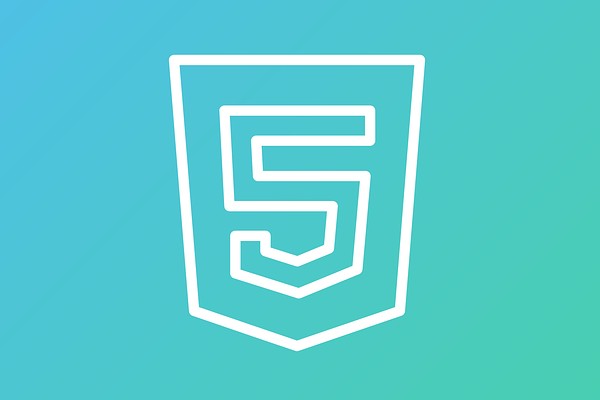
HTML or HyperText Markup Language is the foundation of web development that every developer needs to be familiar with.
A popular skill for web developers, it is the 2nd most commonly used language in 2020, according to a survey by Stack Overflow.
Although it is not a full-fledged programming language, it is the standard language used to create web pages.
Features
- HTML provides the structure for the web pages and is responsible for the proper formatting of text and images.
- It allows the use of templates so designing a webpage can be done easily.
- It is lightweight and fast.
Pros
- Quite easy to learn and implement.
- Supported by every browser.
- Free and accessible.
Cons
- Static language, so not possible to create dynamic pages.
- Need to write a lot of code for developing a simple web page.
2. CSS
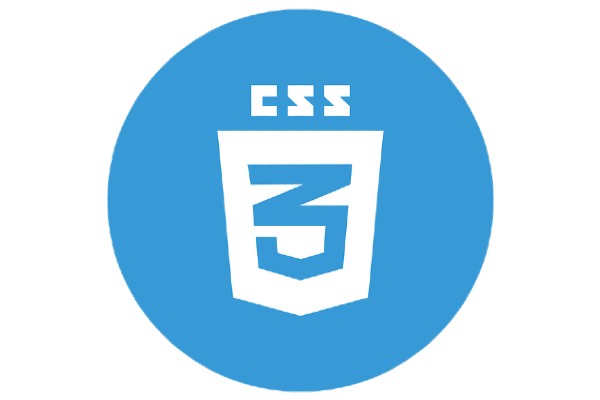
Like HTML, CSS is another basic language that every developer must know.
CSS stands for Cascading Style Sheets and is often used with HTML to govern the style of a webpage.
The combination of HTML and CSS is called the mother of all programming languages.
The size, color, and positions of all elements in a web page are determined by CSS.
Features
- It has a cascading style, meaning throughout a webpage, an applied style will cascade down from parent to child.
- It supports responsive web design.
- CSS upholds consistency due to its cascading nature.
Pros
- Simple and beginner-friendly.
- Improves page loading speed.
- Simplifies customization of web pages.
Cons
- Possibility of cross-browser issues.
- Confusion due to multiple levels like CSS, CSS2, and CSS3.
3. JavaScript
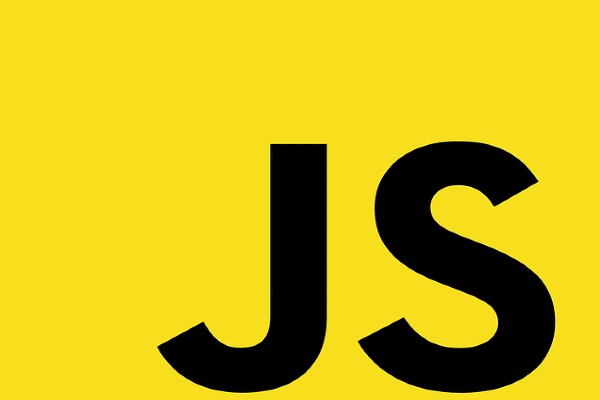
Stack Overflow’s 2020 Developer Survey records JavaScript as the most commonly used programming language in the world.
One of the reasons for its popularity is that it can be used for both frontend and backend web development.
It is used to add behavior and interactivity to web pages and also includes several libraries and frameworks.
JavaScript is a favorite choice of developers to create dynamic web elements like clickable buttons or animated graphics.
Features
- It is a lightweight programming language.
- The syntax is simple and easy to learn.
- Besides web development, it can be used for developing mobile apps, games, and web servers.
Pros
- JavaScript is very fast.
- Easy to integrate with other languages.
- It is simple and versatile.
Cons
- No multiple inheritance support.
- Less secure compared to other languages.
4. Python

An open-source language that is easy to learn and use, Python is one of the most popular languages used for web development.
For beginners as well as experienced programmers, Python is an ideal choice.
It is used for backend development, data science, web app development, and automation.
It has a huge collection of standard libraries, which makes programming using Python easier for developers.
Features
- It has dynamic typing capabilities which makes it easy for developers to create complex websites that need constant content changes.
- It is an efficient backend web development language and integrates with other programming languages like C, C#, and Java.
- It can be associated with popular web development frameworks like Django and Flask to create web-based applications.
Pros
- OOP characteristics simplify programming.
- Extensively scalable.
- Emphasizes code readability.
Cons
- Interpreted programming language, hence slow.
- Not suitable for developing mobile applications.
5. Java

In 1990, Sun Microsystems developed Java to add features to the C++ language.
It was built on the Write Once Run Anywhere principle.
Today, it is owned by Oracle and is one of the most widely used backend languages for web development.
It follows the OOP concepts, has open-source feature-rich libraries, and is a good language to learn due to its moderate learning curve and high productivity.
Features
- Java supports multithreading so multiple threads can be executed concurrently implying maximum CPU utilization.
- It supports vertical and horizontal scaling with only slight code changes.
- It can handle massive amounts of data and is highly secure.
Pros
- Easy to learn, write, and debug
- It is portable
- It is robust and versatile
Cons
- It consumes more memory
- Slow compared to languages like C or C++
6. Typescript
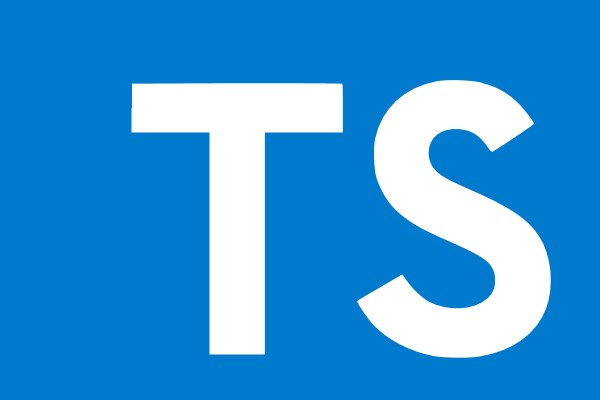
An open-source programming language introduced by Microsoft in 2012, Typescript is one of the most wanted programming languages for web development according to GitHub.
It is similar to JavaScript in syntax and semantics and is often called JavaScript++.
Being more powerful than JavaScript, Typescript supports the development of enterprise-level applications with large codebases.
Features
- Has several inbuilt debugging tools that make development simple
- It is a type-safe language, hence type-related errors are reduced
- Supported by Visual Studio Code, Microsoft’s free code editor.
Pros
- Cross-platform and cross browser compatibility
- Supports OOP concepts
- Increased code readability
Cons
- Typescript code needs to be transpiled to Javascript code before running
- Requires additional learning over Javascript
7. Objective C
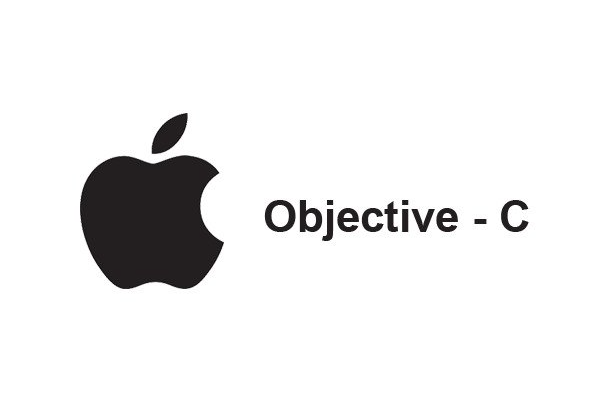
Objective C or C is a simple and general-purpose language that was developed in 1972.
It is a popular language and often one of the first choices of programmers who are beginning to step into the development domain.
Objective C is majorly used to code for the iOS operating system.
Features
- Supports dynamic typing and therefore has excellent flexibility
- Used with Cocoa or Cocoa Touch framework
- Supports dynamic memory allocation
Pros
- Super easy to learn
- Fast, powerful, and flexible
- Can perform complex calculations
Cons
- Error detection is difficult
- Does not support OOP concepts
8. C++

An extension of Objective C, C++ is a middle-level programming language that was developed in 1980.
It is a simple language and is quite useful and easy for beginners to handle.
In addition to what Objective C offers, C++ supports features like object-oriented programming, exception handling, and type checking.
Features
- Supports OOP concepts like abstraction, inheritance, and encapsulation.
- Has a robust standard library
- Quick and efficient compiling mechanism
Pros
- Simple and portable
- Highly scalable
- Large community support
Cons
- No automatic garbage collection
- Complexities associated with pointers
9. SQL
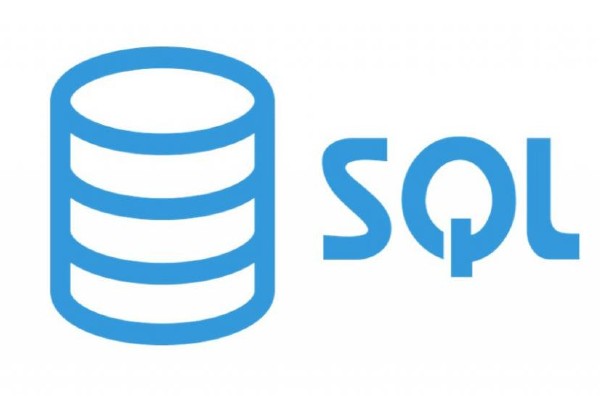
SQL, or Structured Query Language, is a standard database language that is used in combination with another programming language.
As a database query language, it is used to manipulate databases.
It comes third in the list of most used programming languages by Stack Overflow, with more than 50% of developers using SQL for programming.
Features
- It is used to create, read, update and delete records in databases.
- It is widely used in business intelligence tools.
- SQL has a simple syntax.
Pros
- It is easily accessible.
- It is highly functional.
- It is portable.
Cons
- It works well only with small databases.
- Scaling is expensive and time-consuming.
10. PHP
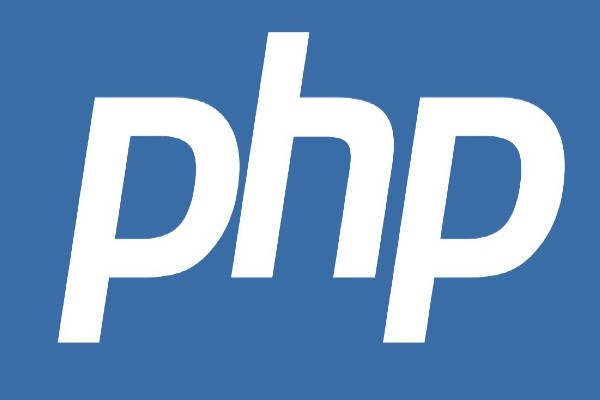
PHP or Hypertext Preprocessor is an open-source scripting language used for back-end development.
It is mostly used for developing dynamic, data-heavy websites and is an interpreted language.
It is one of the most popular web page languages, and frameworks like Drupal and WordPress make use of PHP.
Features
- It is supported by many third-party extensions like .NET, MySQL, and Apache.
- It can output images, PDF, text, animations, and HTML.
- It is compatible with cloud services.
Pros
- Easy to learn and use.
- Can be used on all major operating systems.
- Has great community support.
Cons
- Error handling features are not excellent.
- Development using PHP only can be slow.
11. C#
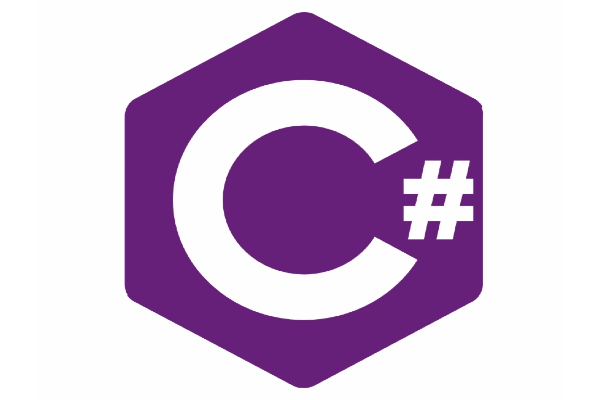
C# (C Sharp) is an object-oriented programming language developed by Microsoft.
It was originally developed for the .NET framework to build Windows applications.
Today it is extensively used in backend development, game development, and mobile app development.
It can be used not just on Windows, but also on Android, Linux, and iOS platforms-making it one of the best website coding languages in 2025.
Features
- It has a strong memory backup facility and avoids memory leaks
- It is equipped with a rich set of libraries enabling faster development
- It is the only language used by Windows Presentation Foundation (WPF)
Pros
- Ideal for all types of web development
- Complete integration with .NET library
- Compilation and execution is fast
Cons
- Difficult to handle multi-thread applications
- Less flexible
12. Angular
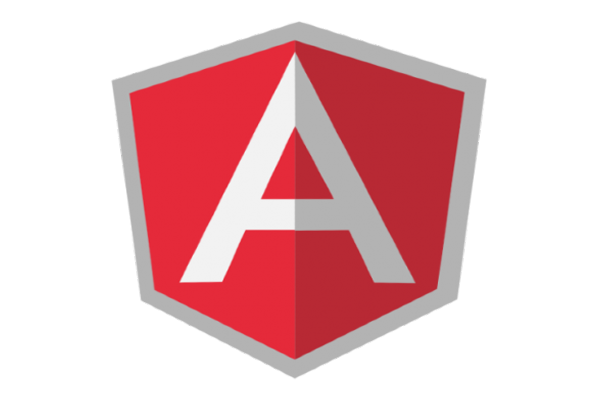
Angular is one of the most used front-end languages that have MVC architecture and allows dynamic modeling.
It is an important programming language that supports the development of complicated applications.
For UI development, Angular makes use of HTML, so it is easy to understand.
With Angular, you can develop projects with extensive functionality and appealing design most efficiently.
Features
- It utilizes templates to make development quick and easy.
- It uses extensions like Snippet and Angular Command Line Interface to simplify the development.
- Using Angular Filters, data is filtered before reaching the view.
Pros
- Minimum coding is required.
- Supports two-way data binding.
- Better functionality and improved performance.
Cons
- Steep learning curve.
- Need to enable JavaScript support in a system for proper functioning.
13. Ruby Rails
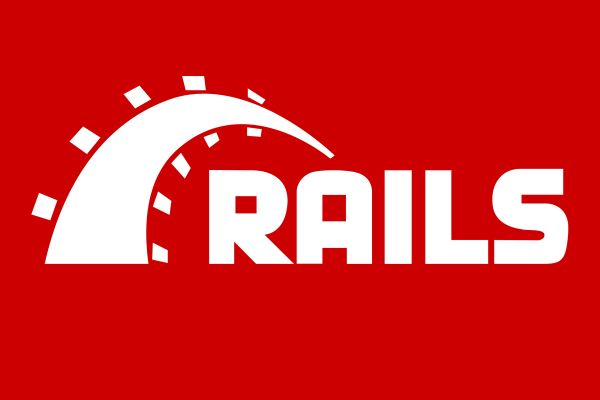
Ruby is a popular backend web development language that supports procedural, functional, and object-oriented programming.
It is one of the most recommended languages for beginners to learn.
Combined with the Ruby on Rails framework, the language is used for web development extensively.
Features
- It supports various Graphical User Interface (GUI) tools
- Favors all major platforms like Windows, Mac, and Linux
- Has prominent features like automatic garbage collection, centralized package management, custom dispatch behavior, etc.
Pros
- Has many helpful tools and libraries
- Large and active community support
- Has strong adherence to web standards
Cons
- Codes written in Ruby are difficult to debug
- It is comparatively slow
14. Golang
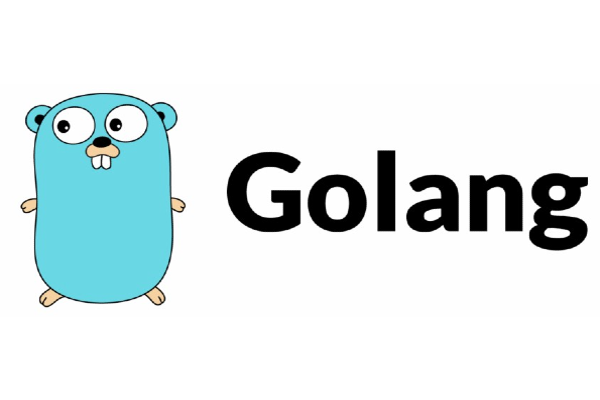
Golang or Go is an open-source programming language developed at Google in 2007.
It is similar to C in syntax and allows for the development of efficient and secure web applications.
Go is ideal for network programming, developing data pipelines, and machine learning packages.
Features
- It is equipped with inbuilt testing tools
- Supports multithreading and can execute several processes concurrently
- It has excellent memory safety features like garbage collection for automatic memory management
Pros
- Quite easy to learn
- Has a powerful standard library
- Offers high performance
Cons
- Inefficient error handling capabilities
- Lack of flexibility
15. Scala
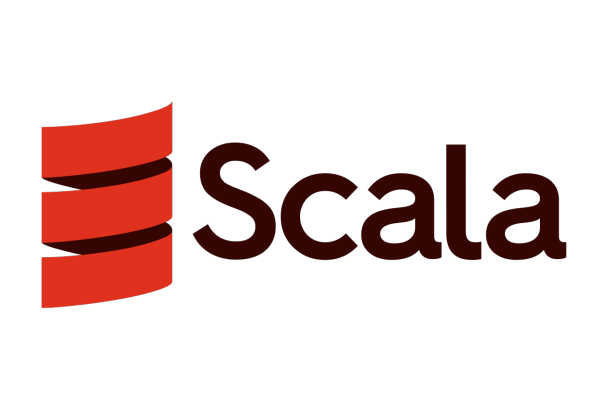
Scala is grouped in the Java family and is one of the latest additions to it.
It has all the features of Java plus some additions which help to overcome some of the cons of Java.
Scala is a great choice for developing data analytics solutions.
Features
- Supports concurrent programming and execution of procedures in parallel
- Has great IDE support
- Highly functional programming with better code quality
Pros
- Easy to learn
- Concise code
- Greatly scalable
Cons
- The built-in compiler is slow
- Limited community support
16. Kotlin
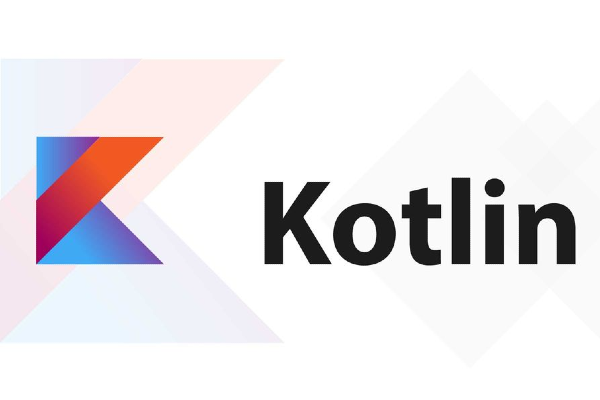
A software development company called JetBrains created the contemporary programming language Kotlin, which was made public in 2011.
It can operate on the Java Virtual Machine (JVM) and integrate without any issues with already-existing Java codebases thanks to Kotlin’s full interoperability with Java.
Features
- It offers a short and expressive syntax that eliminates boilerplate code, making the code easier to read and maintain.
- By separating nullable and non-nullable types at the language level, Kotlin’s built-in null safety measures help prevent null pointer exceptions.
- Kotlin and Java are entirely compatible, enabling programmers to smoothly use the libraries, frameworks, and other resources already available in Java.
- It offers type inference, which enables the compiler to determine a variable’s type automatically, eliminating the need for explicit type declarations.
- Extension functions in Kotlin help developers organise and reuse their code by enabling them to add new functions to existing classes without changing the source code.
- Kotlin has built-in support for coroutines, which are lightweight concurrency primitives used for asynchronous programming and managing lengthy activities.
- It offers features that support functional programming, including higher-order functions, lambda expressions, and immutable data structures, allowing for a more functional programming approach.
Pros
- The clear syntax and contemporary features of Kotlin can greatly boost developer output and cut down on verbose code.
- Its ability to effortlessly interact with Java code makes it simple to use in already-existing Java projects and speeds up the migration process.
- Its null safety features aids in the compile-time detection of null pointer exceptions, lowering the likelihood of crashes brought on by null values.
- IntelliJ IDEA (also created by JetBrains), which offers potent capabilities for code refactoring, auto-completion, and debugging. It provides strong tooling and IDE support for Kotlin.
- Its community is expanding quickly, which means that more libraries, frameworks, and tools are becoming accessible to help Kotlin development.
Cons
- Kotlin has a mild learning curve for Java developers, but this doesn’t mean that they shouldn’t become familiar with its syntax, features, and best practices.
- Compared to Java, Kotlin’s standard library contributes some extra size to the built binaries, which could lead to significantly bigger build sizes.
- In some circumstances, Kotlin may not be officially supported by legacy systems or frameworks, or it may have insufficient documentation and community resource.
17. Swift
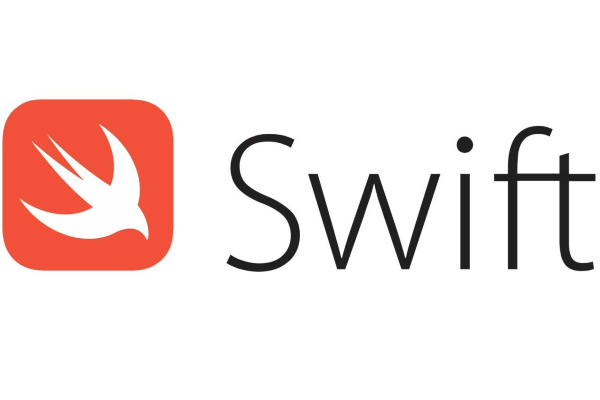
Swift is a modern programming language developed by Apple for iOS, macOS, watchOS, and tvOS app development.
Features
- Concise syntax and type inference.
- Optionals and strong type safety for enhanced stability.
- Built-in error handling.
- Automatic memory management using Automatic Reference Counting (ARC).
- Swift Playgrounds for interactive experimentation and learning.
- Generics and powerful pattern matching.
Pros
- Easy to learn and read with a simple syntax.
- Faster and more efficient performance compared to Objective-C.
- Seamless interoperability with existing Objective-C codebases.
- Robust error handling and safety features.
- Active and supportive community.
Cons
- Limited use outside of the Apple ecosystem.
- Frequent updates and changes may require developers to adapt.
- Smaller community and fewer third-party libraries compared to more established languages.
18. R

R is a programming language and environment primarily used for statistical computing and data analysis.
Features
- Extensive collection of statistical and graphical methods.
- Rich ecosystem of packages and libraries for various data analysis tasks.
- Interactive and dynamic environment for data exploration and modelling.
- Support for data manipulation and transformation.
- Reproducibility through scripts and notebooks.
- Integration with other programming languages like C++, Python, and Java.
Pros
- Powerful statistical capabilities and comprehensive statistical libraries.
- Active and vibrant community for support and collaboration.
- Free and open-source software.
- Excellent data visualization capabilities.
- Flexibility in handling diverse types of data and analysis techniques.
Cons
- Steep learning curve for beginners, especially those without programming experience.
- Performance limitations for large datasets and computationally intensive tasks.
- Lack of strict type checking can lead to potential errors.
- Relatively slower execution speed compared to compiled languages.
- Less suitable for building large-scale production systems.
19. MATLAB
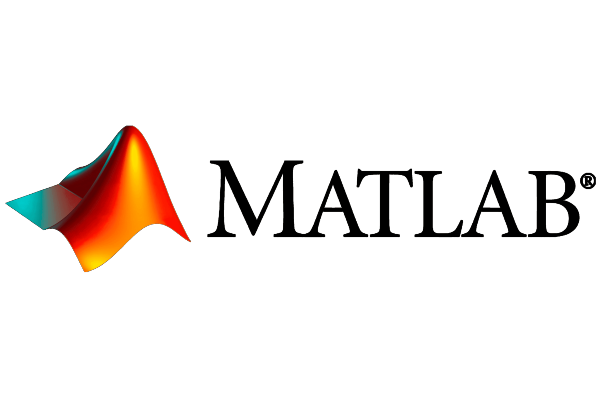
MATLAB is a high-level programming language and environment primarily used for numerical computing and scientific visualization.
Features
- Extensive library of mathematical functions and toolboxes for various scientific and engineering applications.
- Interactive environment with a command-line interface and a graphical user interface (GUI).
- Advanced data visualization and plotting capabilities.
- Simulink for modeling, simulating, and analysing dynamic systems.
- Easy integration with C/C++, Java, Python, and other languages.
- MATLAB Compiler for creating standalone applications.
Pros
- Powerful and comprehensive mathematical and numerical computing capabilities.
- Rich set of built-in functions and toolboxes for various domains.
- Strong support for matrix operations and linear algebra computations.
- Excellent visualization and plotting features for data exploration.
- Widely used in academia and industry, with a large user base.
Cons
- Proprietary software with licence fees, making it less accessible to some users.
- Limited performance for computationally intensive tasks compared to compiled languages.
- Steep learning curve for beginners without prior programming experience.
- Lack of flexibility for general-purpose programming outside of numerical computing.
- Dependency on MathWorks for updates and new features.
20. NoSQL
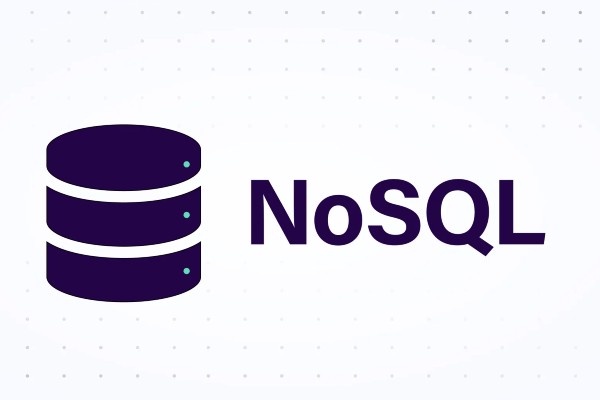
NoSQL, short for “Not Only SQL,” is a category of database management systems that diverges from the traditional relational database model.
Features
- Flexible data model that allows for dynamic and schema-less data structures.
- Scalability and distributed architecture to handle large volumes of data and high traffic loads.
- High availability and fault tolerance with built-in replication and sharding.
- Support for unstructured and semi-structured data types, such as JSON, XML, and key-value pairs.
- Designed for horizontal scaling, enabling easy addition of new nodes to the database cluster.
Pros
- NoSQL databases are well-suited for handling big data and scaling horizontally across multiple nodes.
- NoSQL databases offer high read and write performance due to their optimized data models and distributed nature.
- NoSQL allows for agile development and easier data schema changes compared to rigid relational databases.
- NoSQL databases often run on commodity hardware and can be more cost-effective in terms of hardware and licensing.
- NoSQL databases provide built-in replication and fault-tolerant features for high availability.
Cons
- NoSQL databases may have limited support for complex queries compared to SQL in relational databases.
- NoSQL databases come in various types (e.g., document, key-value, column-family) with different APIs, resulting in a lack of standardization.
- Some NoSQL databases prioritize availability and partition tolerance over strict consistency, leading to potential data consistency trade-offs.
21. Rust

Rust is a systems programming language focused on safety, concurrency, and performance.
Features
- Memory safety without garbage collection through ownership and borrowing systems.
- Strong static typing and type inference for catching errors at compile-time.
- Zero-cost abstractions for high-level programming with low-level control.
- Concurrency primitives for writing efficient and safe concurrent code.
- Built-in package manager (Cargo) and extensive library ecosystem.
- Cross-platform support for various operating systems and hardware architectures.
Pros
- Memory safety and the absence of data races.
- High performance and efficiency.
- Concurrency and parallelism support.
- Expressive syntax and a strong type system.
- Productive tooling and package management.
- Active and supportive community.
Cons
- Steep learning curve.
- Strict and complex borrow checker.
- Limited ecosystem compared to more established languages.
- Longer development cycles.
- Interfacing with C/C++ can be challenging.
22. Perl
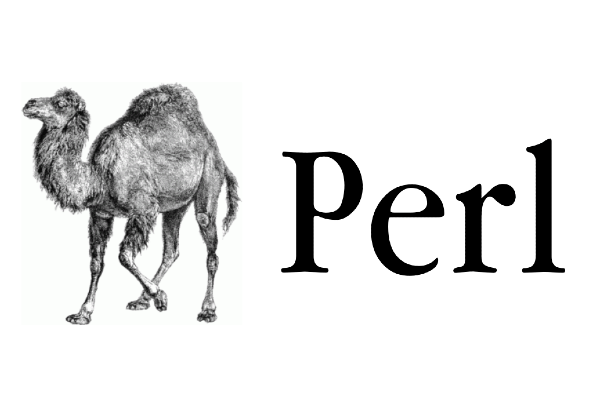
Perl is a high-level scripting language that emphasizes practicality and flexibility in text processing and system administration tasks.
Features
- Powerful regular expression support for pattern matching and text manipulation.
- Extensive built-in functions and modules for diverse tasks.
- Flexible and dynamic syntax allowing for expressive and concise code.
- Cross-platform compatibility with support for various operating systems.
- Perl community’s “There’s more than one way to do it” philosophy promotes code flexibility.
Pros
- Excellent text processing capabilities and support for string manipulation.
- Broad range of modules and libraries available through CPAN (Comprehensive Perl Archive Network).
- Proven track record and widespread use for system administration and web development tasks.
- Rich set of built-in functions and practical features for quick scripting.
- Supportive community and active development.
Cons
- Complex syntax and steep learning curve for beginners.
- Lack of modern language features and stricter programming paradigms compared to newer languages.
- Slower execution speed compared to languages like Python or Ruby.
- Limited adoption and declining popularity in recent years.
23. Dart
Google’s Dart is a free, all-purpose programming language for building different software.
It is an alternative to JavaScript, easy-to-learn and creates reusable code-blocks.
Although the first version was released in 2011, Dart gained popularity in 2017 with Flutter, a tool to build mobile apps for both iPhones and Androids.
Flutter uses one codebase to create cross-performace apps for both Android and iOS.
Features
- Asynchronous: Your apps are more responsive with Dart as it can can handle multiple tasks simultaneously.
- In-built libraries: It saves the time and effort of programmers as it comes with pre-written code for common functionalities.
- Object-oriented: Dart uses objects(same like blueprints) to create reusable components in your programs.
- Strongly-typed: Dart allows programmers to define variable types beforehand which ensures code reliability.
- Concise syntax: Its easy-to-read structure makes writing and understanding code faster.
- Flexible deployment: Dart code can easily be compiled to run on different browsers and platforms.
- Community support: If you have queries, there is a large Dart community that can provide answers.
- Multi-core support: Devices with multiple processors are used by Dart for faster performance.
- Client-optimized: It is designs to run efficiently on both phone and web browsers.
Pros
- Ease of Learning: It has clean syntax with similarities to other languages. This means beginners can easily pick up the language.
- Cross-Platform Development: Programmers can save time and resources by using single Dart codebases for creating apps on multiple platforms.
- DartPad: With DartPad, you can completely avoid a development environment and experiment with Dart code directly in your web browser.
- Productivity: You can write codes faster and get instant results with the help of easy-to-learn syntax and Flutter features like hot reload.
- Strong Ecosystem: All developments made with Dart are supported by a rich collection of libraries, resources and a large developer community.
- Flutter Integration: If you are looking to build beautiful and efficient mobile apps for both iOS and Android, you can rely on Flutter.
- AOT and JIT compilation: Your apps will experience effective performance with the help of Dart code that can be compiled AOT(ahead-of-time) and JIT(just ine time). This ensures native-like speed on different platforms.
Cons
- Google Dependant: Since Dart has been developed by Google, its development and future are dependent on Google’s decisions.
- More Learning Time: Although it is a beginner-friendly language, some Dart concepts require extra learning time.
- Development Stage: Since Dart is in the development stage, some features might be unstable or undocumented.
- Limited Scope: Compared to JavaScript, Dart is still in its infancy which means that its has fewer online resources and job opportunities for developers.
- No Native Support: Since Dart code does not have direct native support, compiling the code to run on different platforms can prove tedious.
24. Elm
Elm, created by Evan Czaplicki, is a programming language focused on building reliable web applications.
It can be easily used by programmers and provides high-quality tools for creating efficient applications.
Compared to other programming languages, Elm is purely functional.
This means Elm functions have the same output for the same input without any side effects.
This allows for the creation of more predictable web applications.
Features
- Immutability: Developers can create reliable applications with the help of data immutability enforced by Elm-meaning data cannot be changed after creation. This simplifies reasoning about your code and prevents unexpected side effects.
- Static Typing: Elm helps in catching errors during the development phase itself. This is done by defining variable types beforehand.
- Functional Programming: Functional programming principles refers to code built using pure functions that avoid side effects and always produce the same output for the same input. Thus Elm produces code that is predictable and easy to test.
- Friendly Error Messages: By providing helpful error messages, Elm can help developers in fixing errors that may occur during development.
- The Elm Architecture (TEA): The Elm architecture helps in separating concerns and building complex UIs. is a recommended pattern for structuring Elm applications.
- Compiles to JavaScript: The code developed through Elm compiles into Javascript. Thus developers can use the vast ecosystem of JavaScript libraries if needed.
Pros
- Easy Project Support: With well-defined structures and a focus on immutability, the code developed with Elm tends to be more predictable and easier to understand. This simplifies project maintenance for the entire development team.
- No Runtime Exceptions: With a focus on pure function and static typing, errors are prevented during program execution. This translates to reliable applications with fewer crashes.
- Semantic Versioning: There is a specific versioning scheme in Elm that checks changes made between versions. This promotes compatibility and manges project dependencies.
- Immutability: Developers can create reliable codes without any unexpected side effects since data can’t be changed after creation in Elm.
- Easy to Learn: Developers can easily pick-up Elm as it has a clean syntax and focus on core programming concepts.
Cons
- Issues with HTML Templating: Developers who are used to traditional templates might find the Elm’s approach to HTML unfamiliar. Elm equires a slightly different mindset for integrating UI elements.
- Difficult to learn: Developers who focus on functional programming may find it easy to use but those familiar with imperative languages might require some extra learning to adapt to Elm.
- Interoperability Challenges: Elm only allows for limited interaction with some JavaScript code, extensive integration is impossible and complex. In such scenarios, programmers may find it difficult to rely on external libraries heavily used in JavaScript.
- Minimal Ecosystem: If you compare Elm and a language giant like JavaScript, it has fewer libraries and even smaller communities. Therefore developers may not be able to find specific functionalities or resources.
Whether you are beginning your programming career or looking to enhance it, these 24 web development languages will prove to be of immense help.
With programming languages, a key aspect is that even when web development trends emerge and fade away, the languages remain pertinent.
So whichever language you choose to master in 2025, will stay relevant for many years to come and aid your programming career.
So, choose a language that piques your interest and have fun learning!
5 Tips to Find the Best Web Development Languages to Learn

After reading about the 24 programming languages you can learn in 2025, are you feeling a little confused about which ones to choose?
All the languages we discussed in the previous section are notable.
But to help narrow down your choice, we have prepared five questions for you to contemplate.
By the end of it, you will have an idea about the best web development languages for you.
1. What are your goals?
What is your goal behind learning programming languages?
Do you want to learn because you enjoy coding or do you want to become a web developer?
If your objectives are non-career related, you can choose any! But, if you intend to become a web developer, you need to be more explicit and ask yourself what exactly you want to do.
Think about whether you want to get into front-end development or backend development.
Do you want to build mobile apps?
Are you interested in data visualization, automation, or anything particular?
Is IoT your area of interest?
Whatever it is, be specific about your goals and choose what’s appropriate for the same.
2. What is the learning curve?
Are you willing to dedicate much of your time and effort to learning or do you have only finite time and resources?
If you want to learn a language quickly and easily, you should choose the simple ones that you can master with average effort.
On the other hand, if you have the time and resources to learn the comparatively harder languages, you can go ahead with it.
If you are a beginner in the programming world, we suggest you get started with simple languages like HTML, Python, C++, or Java.
Once you learn these, you will get a strong base on which you can develop your skills further.
3. What are the popular web development languages?
You can never go wrong if you choose to learn a popular language.
These are the languages that are most sought after in the development industry.
The majority of the companies will be hiring developers proficient in these languages.
Companies typically use a coding test to determine which candidates might be a good fit for the role.
So, if you are looking to start a career in programming, go for these.
Popular programming languages in 2025 are Python, Java, Javascript, C/C++ and PHP.
And the benefit of learning popular languages is that they will stay in demand in the upcoming future as well.
Programming languages don’t go out of trend rapidly, so it will be a good investment.
4. Which are the highest salaried languages?
Income is one of the main aspects of choosing a career.
If you want to make a high income from your career as a developer, understanding the most paying programming languages can help you choose the ones for you.
The highest-paid programming languages for 2025 are Rust, Go, Scala, and Python.
Although these languages may have a steep learning curve, we can assure you that it will be worth the effort!
5. What are the developers saying?
If you are still not a hundred percent sure and want more inspiration, go online and search what the developers are saying.
There are several active developer communities on the internet from where you can get hands-on information.
Take a look at what the developers are talking about – which languages do they find most appealing, what pros and cons do they observe with different languages, which ones are going obsolete – read them all.
Knowing these will help you gain more clarity as you will be listening to the words of experts.
Do you have a better idea about what to choose now?
Great! Remember, always start with one language.
That does not mean you should only learn one, you can learn as many languages as you want.
But, when you are getting started on the journey, it’s important to not overwhelm yourself.
So, start with a single programming language, and when you have a solid foundation and feel confident about exploring more, continue adding more languages to your list!
GMI has been at the forefront of the digital revolution since 2001. We offer world-class web development services to our clients across the Middle East and India. Our expert teams of web developers constantly stay on top of the trends to offer best-in-class services. If you are looking at how to adopt these trends in your website development endeavor, talk to our specialists today.

GMI’s Research Team is a panel of knowledgeable experts from various fields such as digital marketing, social media, and web development, all united by a common goal—to educate. We enjoy exploring everything from the latest industry trends and emerging technologies to people and demographics, both in the UAE and beyond. Through our blog posts, we share valuable insights that help businesses and marketers stay informed and prepared for the challenges and opportunities that lie ahead.









